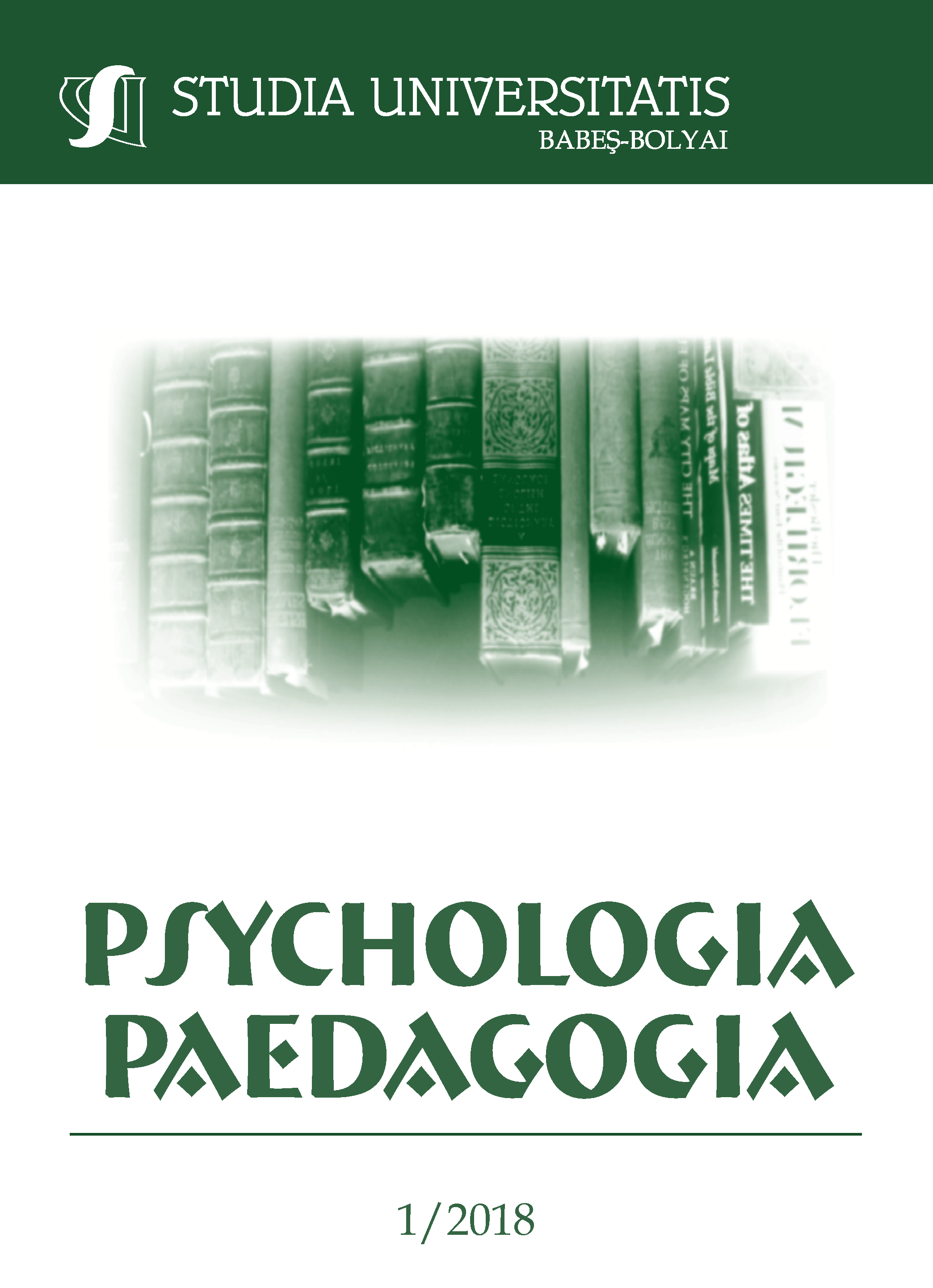TEACHING LEGAL ENGLISH TO LAW SCHOOL STUDENTS THROUGH VOCABULARY PRACTICE TASKS
DOI:
https://doi.org/10.24193/subbpsyped.2018.1.02Keywords:
English for Specific Purposes, English for Legal Purposes, CBI, CLIL, Le-gal English teaching resources, LE vocabularyAbstract
The paper aims to demonstrate that students can learn and reinforce Legal English vocabulary through practical tasks developed based on authentic materials. The arguments to support such a demonstration consist in showcasing a variety of examples of practical vocabulary tasks that we have developed and used in class with our students. Yet, before shifting to the practical facets of teaching Legal English to law school students, the article debuts with a clarification of some concepts related to English language teaching, as well as with language teaching approaches, which is further followed by a brief analysis of the teaching resources available for Legal English and their ad-vantages. As previously mentioned, the final section of the paper is devoted to the extensive exemplification of the possibilities a language instructor can use in a Legal English class based on the practical tasks he/she may design and develop starting from authentic materials. The teaching practice, however, has revealed that, though students can as well acquire legal English terminology while being engaged in and as a result of vocabulary-based practical tasks, the degree of effectiveness of their learning of English legal concepts is higher if learning is contextualized.
Das Papier zielt darauf ab, zu demonstrieren, dass Studenten Legal English Vokabular durch praktische Aufgaben, die auf authentischen Materialien basieren, lernen und verstärken können. Die Argumente, die für eine solche Demonstration sprechen, bestehen darin, dass wir eine Vielzahl von Beispielen praktischer Wortschatzaufgaben zeigen, die wir im Unterricht mit unseren Schülern entwickelt und angewendet haben. Bevor jedoch auf die praktischen Facetten des juristischen Englischunterrichts für Jurastudenten übergegangen wird, beginnt der Artikel mit einer Erläuterung einiger Konzepte, die sich auf den Englischunterricht beziehen, sowie auf Sprachunterrichtsansätze, auf die eine kurze Analyse folgt Unterrichtsmaterialien für Legal English und ihre Vorteile. Wie bereits erwähnt, widmet sich der letzte Teil der Arbeit der extensiven Veranschaulichung der Möglichkeiten, die ein Sprachlehrer in einem Legal English-Kurs nutzen kann, basierend auf den praktischen Aufgaben, die er / sie aus authentischen Materialien entwerfen und entwickeln kann. Die Unterrichtspraxis hat jedoch gezeigt, dass, obwohl die Schüler sowohl legale englische Terminologie erwerben können als auch als Ergebnis vokabularbasierter praktischer Aufgaben, der Grad der Effektivität ihres Erlernens englischer Rechtskonzepte höher ist, wenn Lernen stattfindet kontextualisiert.
Schlüsselwörter: Englisch für spezifische Zwecke, Englisch für juristische Zwecke, CBI, CLIL, Rechtsenglischunterricht, LE-Vokabular
References
Berardo, S.A. (2006). The Use of Authentic Materials in the Teaching of Reading, The Reading Matrix 6(2): 62.
Briton, D.M., Snow, M.A., Wesche, M.B. (1989). Content-based second language instruction. NY: Newbury House.
Dudley-Evans, T. & St. John, M. (1998). Developments in ESP: A multidisciplinary approach. Cambridge: Cambridge University Press.
Eastman, D. (2000). The Internet and ELT. The Impact of the Internet on ELT. The British Council English.
Flowerdew, J. & Peacock, M. (2001). Research Perspectives on English for Academic Purposes. Cambridge: Cambridge University Press.
Holme, R. (1996). ESP Ideas. London: Longman.
Krois-Lindner, A. (2008). Using Authentic Texts for Authentic Discourse in the LE Classroom. Retrieved on 15 September, 2010 from http://tvnlingua.onet.pl/1,4,1490700
Marsh, D. (2002). Content and Language Integrated Learning, The European Dimension – Actions, Trends and Foresight Potential.
Mellinkoff, D. (1963). The language of the law. Boston: Little Brown and Company.
Mohan, B. (1986). Language and Content Reading. Addison-Wesley Publishing Company.
Noordin, N. & Samad, A.A. (2011). Examining the Importance of EST and ESL Textbooks and Materials: Objectives, Content and Form. Retrieved on 14 September, 2011 from AFnfhWYJ:www.scribd.com/walido_william/d/65908526-RMeurant-UCMA-EFLtextbookSelec-tionKEA+Noordin,+N.,+Samad,+A.+A.+Examining+the+Importance+of+EST+and+ESL+Textbooks+and+Materials:+Objectives,+Content+and+Form&cd=1&hl=lt&ct=clnk&gl=lt&client=firefox-a.
Pielmuş, C. (2013). Practise Your Legal English. A Vocabulary Workbook for Law Students. Craiova: Universitaria Publishing House. (Romanian)
Robinson, P. (2001). ESP Today. A Practitioner’s Guide. Hertfordshire: Prentice-Hall.
Walker, D.M. (2001). The Scottish Legal System. An introduction to the Study of Scots. Edinburgh: W. Green/Sweet & Maxwell.
Downloads
Published
How to Cite
Issue
Section
License
Copyright (c) 2018 Studia Universitatis Babeș-Bolyai Psychologia-Paedagogia

This work is licensed under a Creative Commons Attribution-NonCommercial-NoDerivatives 4.0 International License.





